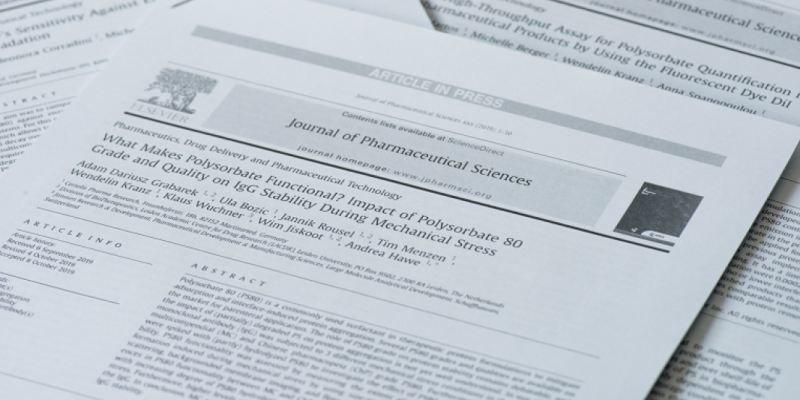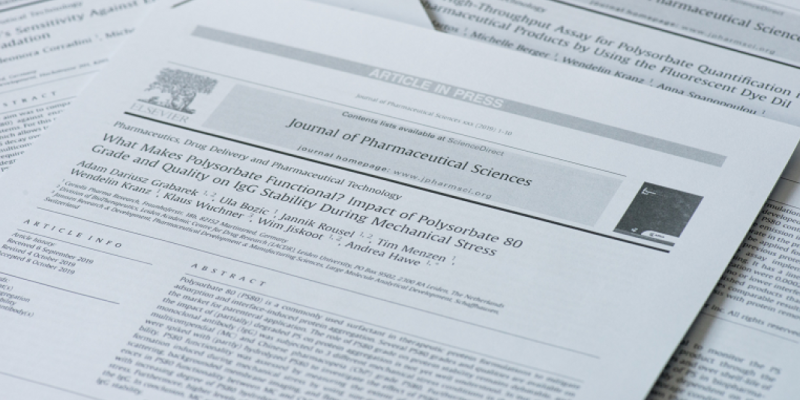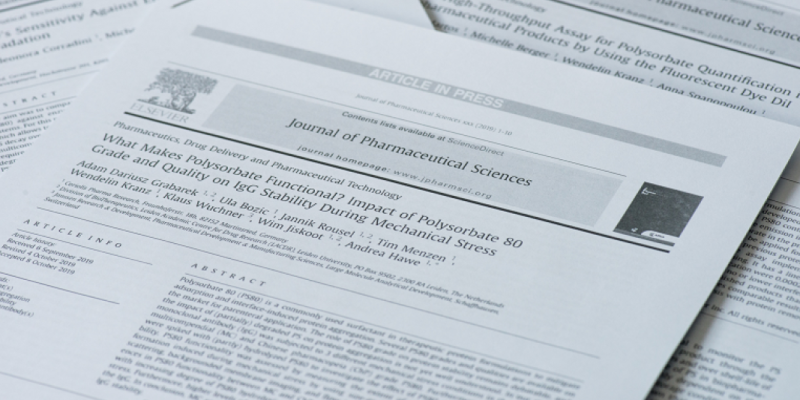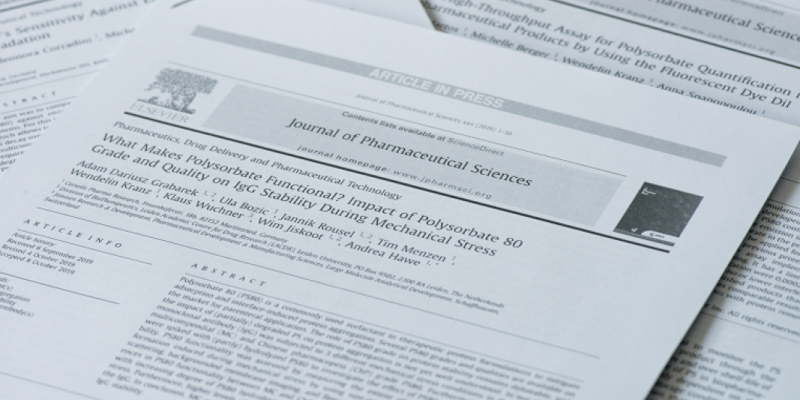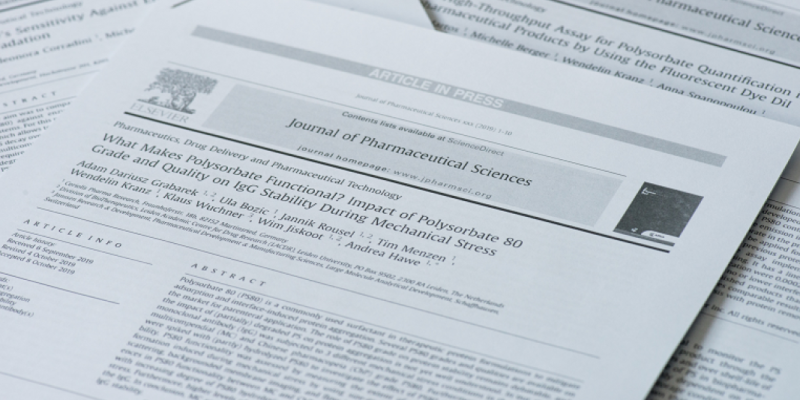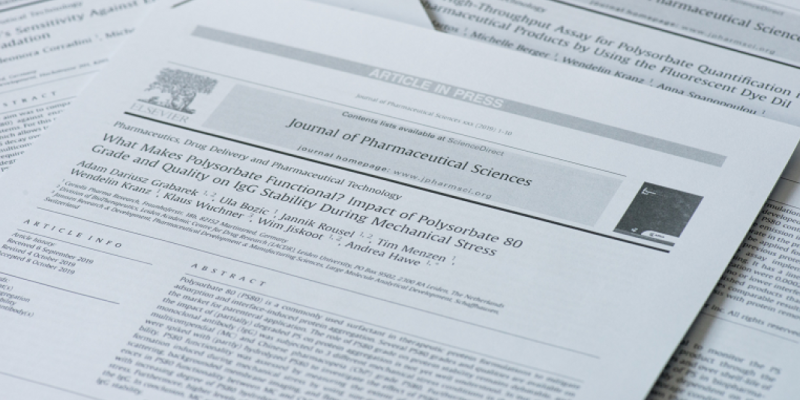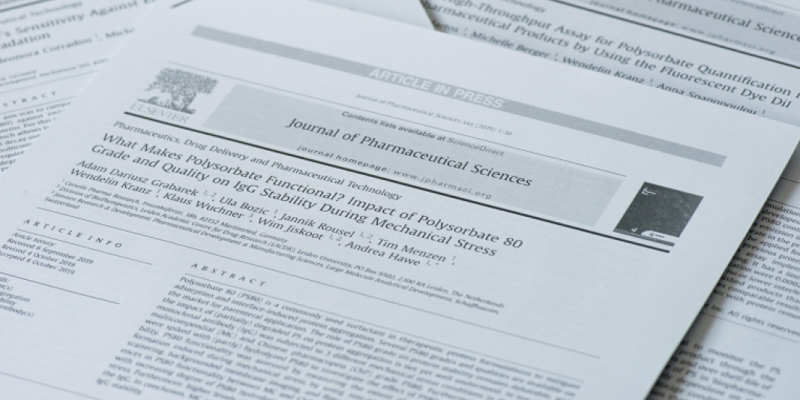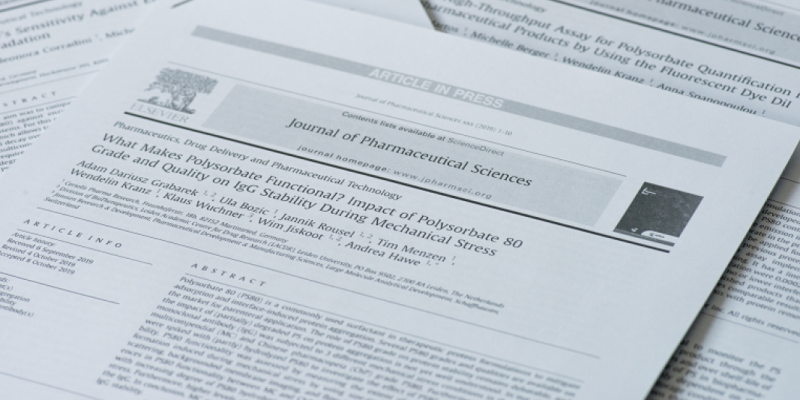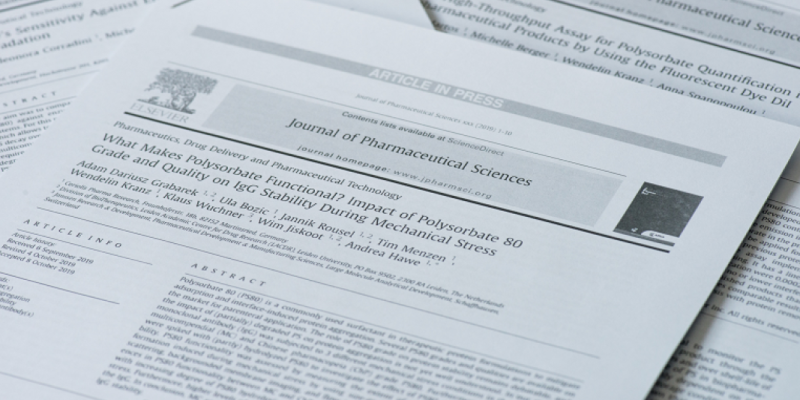Photodegradation Pathways of Protein Disulfides: Human Growth Hormone.
Pharm Res. 2017 Dec
PURPOSE: Comprehensive product characterization was performed for the photodegradation of protein disulfides, representatively of human growth hormone (somatotropin; hGH), in order to provide a product database, which will be useful for the general analysis of protein stability.
METHODS: HGH was photo-irradiated at λ = 254 and λ > 295 nm and tryptic digests were analyzed by HPLC-MS to investigate light-induced disulfide degradation pathways.
RESULTS: A total of 60 products were detected, and structures/tentative structures were assigned to the products by MS2 and MS3 analysis. The main products were reduced Cys residues, dithiohemiacetal, thioether and disulfide scrambling products. In addition, we detected Cys degradation products such as Cys thioaldehyde, dehydroalanine (Dha), Ala, Ser semialdehyde, Ser, S-sulfocysteine, and Gly. Frequently, the tryptic fragments contained more than one modification, i.e. a Cys degradation product in close proximity to a dehydrated amino acid. Several novel cross-links were detected between Cys and Tyr, Cys, Ser and Phe, Cys and Trp, and Trp and Tyr. Photo-induced protein fragmentation was detected specifically at or in close proximity to the disulfide bond between T6 and T16. An in-house packed 75 cm nano-column enabled us to resolve various isomers/diastereomers of the photo-degradation products.
CONCLUSION: A comprehensive analysis of photodegradation products revealed a variety of novel photo-products, including cross-links, originating from disulfide degradation. The mechanisms of product formation are discussed.
Pharm Res. 2017 Dec
https://link.springer.com/article/10.1007%2Fs11095-017-2256-6


